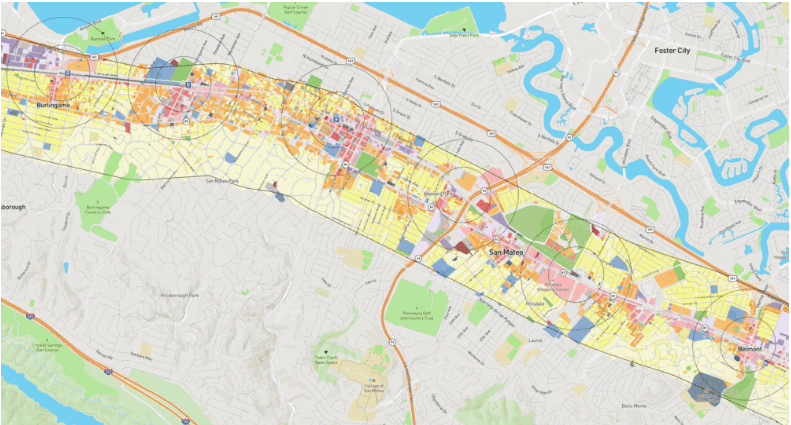
UrbanFootprint co-founder Peter Calthorpe and New York Times reporter John Markoff spent the day touring Silicon Valley’s El Camino Real corridor discussing a number of issues impacting the future of cities. In this wide-ranging interview, Calthorpe shares how UrbanFootprint’s analysis reimagines the low-density commercial land currently lining El Camino and offers a new paradigm for mobility and housing options aimed to relieve the San Francisco Bay Area housing crisis.
In the study referenced in the New York Times article, UrbanFootprint models the corridor’s capacity to house 250,000 new homes and enhance mobility with autonomous rapid transit (ART), estimated to be twice as fast as traditional bus service and cost about half as much to operate.
With the software’s built-in data library, design tools, and analytics, UrbanFootprint quickly evaluated the potential benefits and impacts of various housing and development scenarios along the El Camino corridor in terms of emissions, vehicle-miles traveled, water use, energy use, and beyond.
Read the New York Times article to learn more and get the details on Calthorpe’s solution for avoiding congestion while increasing housing units, including a fleet of self-driving vehicles in dedicated lanes.
Curious about how you can use UrbanFootprint to run a similar assessment for housing and transit for your next plan? Schedule a personalized demo today.







